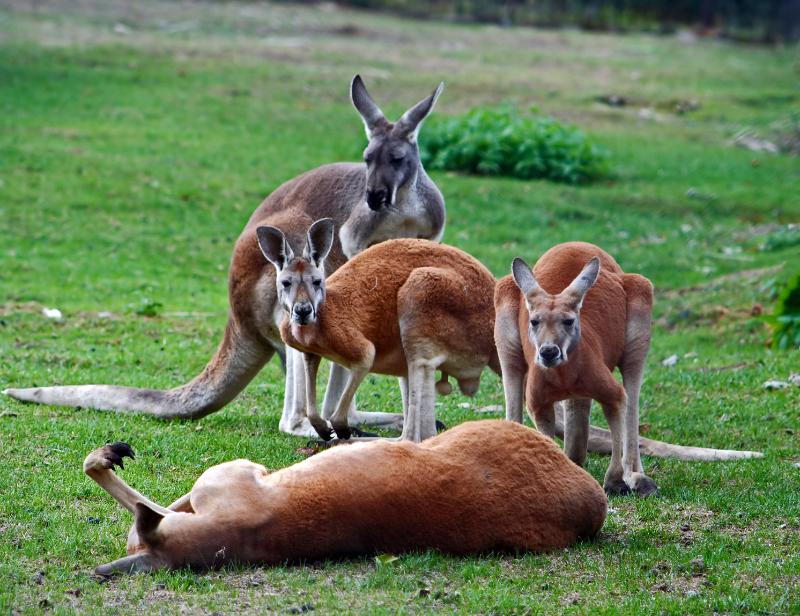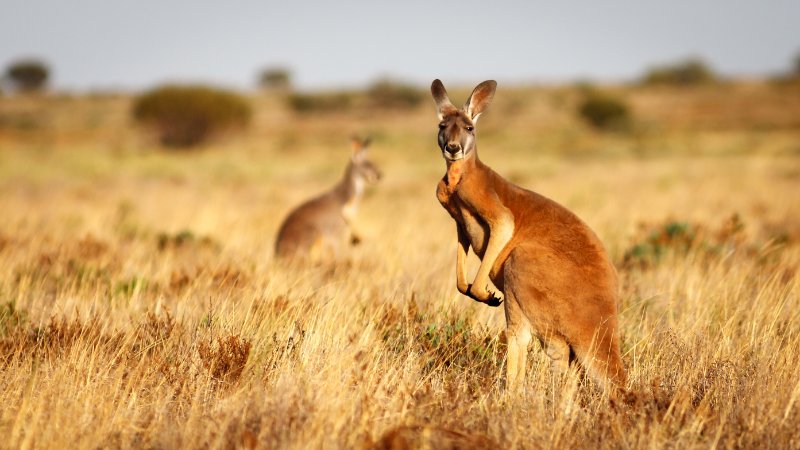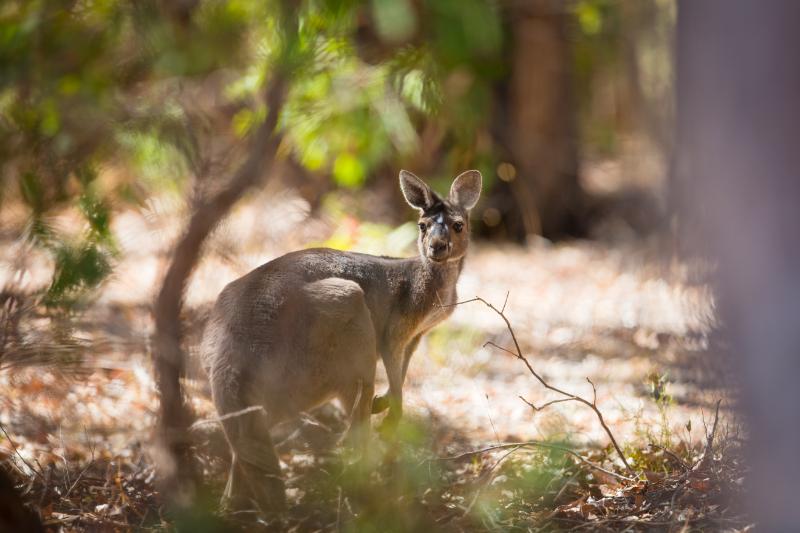Welcome to an exciting journey into the world of Australia’s most iconic pouch-bearing native – the kangaroo. If there’s one thing that’s as intriguing as kangaroos themselves, it is their natural homes – the kangaroo habitat. Primarily residing in Australia, but also scattered across New Guinea and Tasmania, these remarkable marsupials truly make for an exciting exploration.
Encounters in the Land Down Under: The Kangaroo Habitat

Spotting kangaroos in their habitat is a one-of-a-kind experience – from their light brown coat to legs built for powerful jumps and a long tail for balance, they’re an embodiment of Australia’s unique wildlife. And let’s not forget their uncommon reproductive system – baby kangaroos or joeys nestle snugly in their mother’s pouch for nine months, feeding off any of the four nipples found there.
Eastern Grey Kangaroos: Heavyweights of the Bounce

A sub-species worth noting, Eastern Grey Kangaroos, are not only the heaviest of the herd but also distinguished by their night-time activity patterns. During the day, they find reprieve in the coolness of trees or thick shrubs. Eastern Greys are speed demons, reaching impressive speeds and covering over 9 feet in a single leap – factors that render their habitat of the damp, dense forests along the eastern coastline of Australia, a perfect fit.
Where Eastern Greys Hang Out
- Coastal areas
- Moist forests
- Areas of thick shrubs and foliage
Red Kangaroos: Marsupials on the Move

As the largest of all kangaroo species, Red Kangaroos carry a distinctive hue corresponding to gender – a reddish coat for males (more pronounced in eastern parts) and a bluish-grey for females. Adaptability is their forte, and this is seen in the vastness of the red kangaroo habitat, spanning across moisture-laden forests to dry desert patches, across most of Australia.
See Related: The Fascinating World of Kangaroo Reproduction: Learn About Their Unique Process
Western Grey Kangaroos: The Versatile Dwellers

Smaller in size but similar in appearance to their Eastern counterparts, the Western Grey Kangaroos are uniquely identified by their strong musky odor and endearing communication through clicking sounds. In terms of versatility, their habitats are shared with their Red neighbors – ranging from green golf courses and bustling cities to arid desert areas and lush forests.
Australia’s Efforts to Nurture Kangaroo Habitats
What makes Australia stand apart is not just the highest population of kangaroos, but also its exemplary efforts to nurture kangaroo habitats. With the introduction of numerous watering sites, it has markedly improved the wildlife scenario, particularly for kangaroos, ensuring their continuous flourish across the continent. Thus, this region remains a paradise for kangaroo enthusiasts and animal lovers worldwide.
Preservation Measures Include
- Creation of watering sites
- Promotion of fauna wellbeing
- Control of overpopulation in certain areas
So, as we wrap up our exploration of the kangaroo habitat, we’re left fascinated by these incredible marsupials, their adaptability, and the astonishing variety they bring to the eco-diversity of the ‘Land Down Under’. In the end, much like the kangaroo, let’s hope our curiosity and knowledge continue to leap forward.